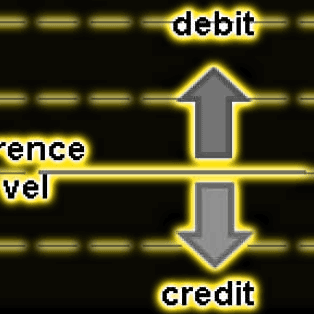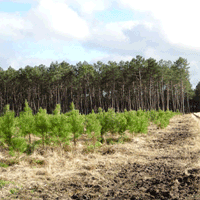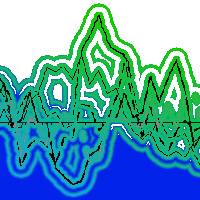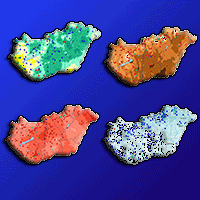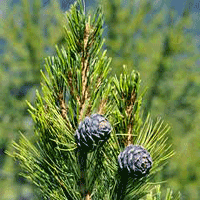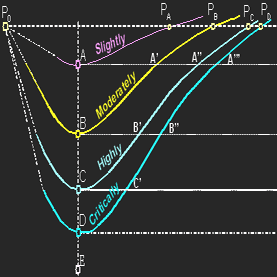
Approaches to classifying and restoring degraded tropical forests for the anticipated REDD+ climate change mitigation mechanism
N Sasaki (1-2) , GP Asner (3), W Knorr (4), PB Durst (5), HR Priyadi (6-7), FE Putz (8)
iForest - Biogeosciences and Forestry, Volume 4, Issue 1, Pages 1-6 (2011)
doi: https://doi.org/10.3832/ifor0556-004
Published: Jan 27, 2011 - Copyright © 2011 SISEF
Research Articles
Abstract
Inclusion of improved forest management as a way to enhance carbon sinks in the Copenhagen Accord of the United Nations Framework Convention on Climate Change (December 2009) suggests that forest restoration will play a role in global climate change mitigation under the post-Kyoto agreement. Although discussions about restoration strategies often pertain solely to severely degraded tropical forests and invoke only the enrichment planting option, different approaches to restoration are needed to counter the full range of degrees of degradation. We propose approaches for restoration of forests that range from being slightly to severely degraded. Our methods start with ceasing the causes of degradation and letting forests regenerate on their own, progress through active management of natural regeneration in degraded areas to accelerate tree regeneration and growth, and finally include the stage of degradation at which re-planting is necessary. We argue that when the appropriate techniques are employed, forest restoration is cost-effective relative to conventional planting, provides abundant social and ecological co-benefits, and results in the sequestration of substantial amounts of carbon. For forest restoration efforts to succeed, a supportive post-Kyoto agreement is needed as well as appropriate national policies, institutional arrangements, and local participation.
Keywords
Assisted natural regeneration, Biodiversity, Climate change agreement, Forest restoration, REDD-plus, Reduced-impact logging, Silviculture
Authors’ Info
Authors’ address
Graduate School of Applied Informatics, University of Hyogo, 650-0044 Kobe (Japan)
Harvard Forest, Harvard University, MA-01366 Petersham (USA)
Department of Global Ecology, Carnegie Institution for Science, CA-94305 Stanford (USA)
QUEST, Department of Earth Sciences, University of Bristol, BS81RJ Bristol (UK)
Food and Agriculture Organization of the United Nations, Regional Office for Asia and the Pacific, Bangkok (Thailand)
Center for International Forestry Research (CIFOR), P.O. Box 0113, BOCBD Bogor 16000 (Indonesia)
Southern Swedish Forest Research Centre, Swedish University of Agricultural Sciences, P.O. Box 49, SE-230 53 Alnarp (Sweden)
Department of Biology, University of Florida, FL 32611 Gainesville (USA).
Corresponding author
Paper Info
Citation
Sasaki N, Asner GP, Knorr W, Durst PB, Priyadi HR, Putz FE (2011). Approaches to classifying and restoring degraded tropical forests for the anticipated REDD+ climate change mitigation mechanism. iForest 4: 1-6. - doi: 10.3832/ifor0556-004
Paper history
Received: Aug 28, 2010
Accepted: Nov 19, 2010
First online: Jan 27, 2011
Publication Date: Jan 27, 2011
Publication Time: 2.30 months
Copyright Information
© SISEF - The Italian Society of Silviculture and Forest Ecology 2011
Open Access
This article is distributed under the terms of the Creative Commons Attribution-Non Commercial 4.0 International (https://creativecommons.org/licenses/by-nc/4.0/), which permits unrestricted use, distribution, and reproduction in any medium, provided you give appropriate credit to the original author(s) and the source, provide a link to the Creative Commons license, and indicate if changes were made.
Web Metrics
Breakdown by View Type
Article Usage
Total Article Views: 77059
(from publication date up to now)
Breakdown by View Type
HTML Page Views: 60989
Abstract Page Views: 4799
PDF Downloads: 9365
Citation/Reference Downloads: 147
XML Downloads: 1759
Web Metrics
Days since publication: 5436
Overall contacts: 77059
Avg. contacts per week: 99.23
Citation Metrics
Article Citations
Article citations are based on data periodically collected from the Clarivate Web of Science web site
(last update: Mar 2025)
Total number of cites (since 2011): 39
Average cites per year: 2.60
Publication Metrics
by Dimensions ©
Articles citing this article
List of the papers citing this article based on CrossRef Cited-by.
References
High-resolution carbon stocks and emissions in the Amazon. Proceedings of the National Academy of Sciences USA 107: 16738-16742.
CrossRef | Gscholar
Forests beneath the grass. In: “Proceedings of the regional workshop on advancing the application of assisted natural regeneration for effective low-cost restoration. Bohol (Philippines) 19-22 May 2009. RAP Publication 2010/11, FAO, Bangkok, Thailand.
Gscholar
Global forest resources assessment 2010. Main Report. FAO Forestry Paper 163, FAO, Rome.
Gscholar
Assisted natural regeneration: an overview. In: “Advancing assisted natural regeneration (ANR) in Asia and the Pacific” (Dugan PC, Durst PB, Ganz DJ, McKenzi PJ eds). FAO Regional Office for Asia and the Pacific, Bangkok, Thailand, pp. 1-4.
Gscholar
Reducing greenhouse gas emissions from deforestation and degradation in developing countries: a source book of methods and procedures for monitoring, measuring and reporting. Report version COP14-2, GOFC-GOLD Project Office, Natural Resources Canada, Alberta, Canada.
Gscholar
Logging for the ark: improving the conservation value of production forests in South East Asia. CIFOR Occasional paper 48, CIFOR, Bogor, Indonesia.
Gscholar
Rainforest scientists urge UN to correct “serious loophole” by changing its definition of “forest”. Web site.
Gscholar
Stand dynamics of dipterocarp trees in Cambodia’s evergreen forest and management implications; a case study in Sandan District, Kampong Thom. Journal of Forest Planning 6: 13-23.
Gscholar
Carbon benefits from avoiding and repairing forest degradation. In: “Realising REDD+: national strategy and policy options” (Angelsen A ed). Center for International Forestry Research, Bogor, Indonesia, pp. 249-262.
Gscholar
Performance of 45 native tree species on degraded lands in Singapore. Journal of Tropical Forest Science 19: 25-34.
Gscholar
Description of the primary lowland forest of Berau. In: “Silvicultural research in a lowland mixed dipterocarp forest of east Kalimantan” (Bertault JG, Kadir K eds). The Contribution of STREK Project. CIRADFORDA-P.T. INHUTANII, pp. 51-94.
Gscholar
The economics of biodiversity and ecosystem services in tropical forests. ITTO Tropical Forestry Update 20: 8-10.
Gscholar
Illegal logging: law enforcement, livelihoods and the timber trade. Earthscan, London, UK.
Gscholar
Financial assessment of reduced impact logging techniques in Sabah, Malaysia. In “Applying reduced impact logging to advance sustainable forest management” (Enters T, Durst PB, Applegate GB, Kho PCS, Man G eds). FAO Asia-Pacific Forestry Commission, Bangkok, Thailand, pp. 125-140.
Gscholar
Deforestation, forest degradation, biodiversity loss and CO2 emissions in Riau, Sumatra, Indonesia. WWF Indonesia Technical Report, Jakarta, Indonesia.
Gscholar
Environmentally sound forest harvesting in Brazil - Assessment of regeneration and environmental impacts four years after harvesting. FAO Forest Harvesting Case Study 19. FAO, Rome.
Gscholar
Implications of land use history for natural forest regeneration and restoration strategies in Puerto Rico. In: “Old fields: dynamics and restoration of abandoned farmland” (Cramer AV, Hobbs JR eds). Island Press, Washington, DC, USA, pp. 51-74.
Gscholar

